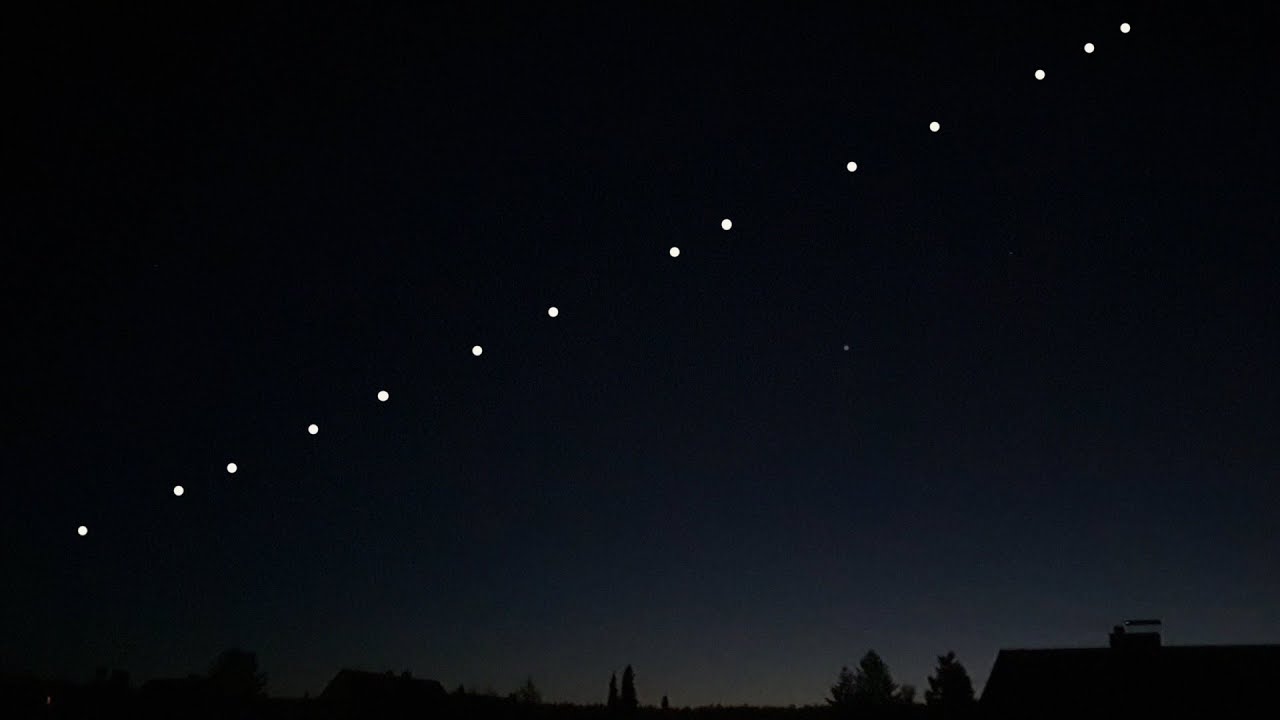
The SpaceX Starlink satellite is growing again
The SpaceX Starlink satellite constellation is growing again: Here’s how to spot it
Elon Musk says future batches of satellites won’t be as bright, but this week the satellites are putting on a unique show.
Last week, SpaceX sent 60 more of the company’s small Starlink broadband satellites to orbit, bringing the total in space to over 400, with hundreds more set to launch in the coming months.
The growing constellation has set off a controversy in the astronomy community
over how surprisingly reflective and visible the metal birds are. On Monday, CEO Elon Musk told astronomers future batches will be equipped with a “sunshade” to make them less visible, meaning right now might be the best time to see the distinctive trains of the bright satellites in the sky before they reach their less visible operating altitude.
Thousands of sightings around the world of “trains” of bright lights moving in a straight line across the night sky, especially near dawn or dusk, have been reported.
A number of them have been mistaken for UFOs, leading even UFO sighting databases to issue statements about Starlink.

Once you know what to look for, spotting Starlink trains is pretty cool and a growing pastime among certain more nerdy parts of society.
You know, the type of person who might also be into watching the International Space Station pass overhead or spending lots of chilly evenings outside just waiting for a meteor shower to get going.
Fortunately for those sorts of people, resources to help locate Starlink in the sky are on the rise.
The Heavens Above website and app are a great place to start. The platform lets you input your current location.
You can then get a list of exactly when recently launched Starlink satellites might be visible from where you are, including the direction and elevation to look in the sky.
For example, multiple opportunities may be coming up to spot satellites in the most recent batch from my location in New Mexico.

Take note of the brightness, or magnitude, in the chart that Heavens Above gives you. The lower the number, the brighter the object will be. A magnitude of 1 or 2 should be easy to spot, while a 3 or 4 might be washed out if you have a lot of light pollution where you are.
The satellites tend to be at their brightest during this period shortly after they first launch, because they’re at a lower altitude. They tend to get fainter as they climb to their operational heights.
Read more: cnet
Read more: https://earthsky.org/space/spacex-starlink-satellite-over-europe-apr-19-2020
Read more: https://www.starlink.com/
Read more: https://www.spacex.com/webcast



